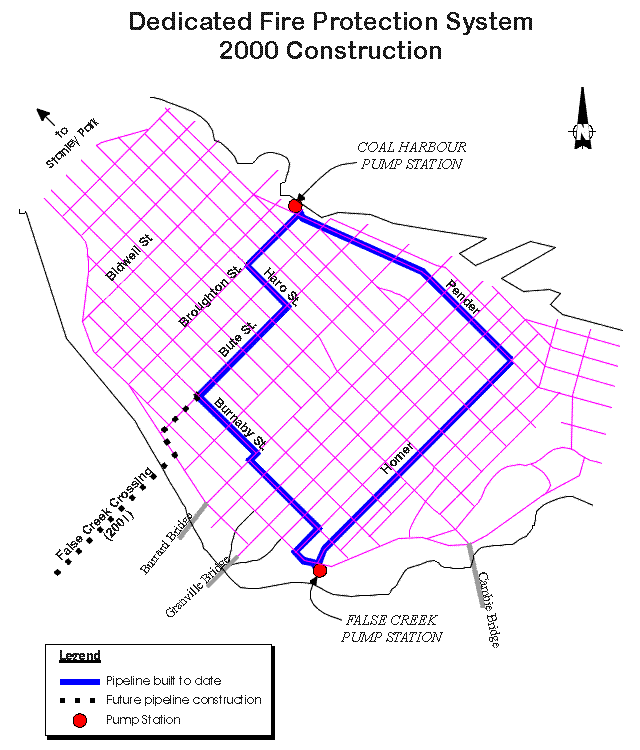The intake and discharge system consists of an intake pipe that draws cold seawater from the Burrard Inlet and a discharge pipe that returns this water back into the Inlet. The deepest location in the Burrard Inlet from which the intake pipe may draw water is approximately 203 feet deep, located about 4921 feet from shore.
The cool seawater will be used to cool a freshwater loop. Therefore, the discharged seawater will be warmer and precautions must be taken to ensure this water does not significantly raise the temperature of any area within the Burrard Inlet. Discharging the warmed seawater closer to the surface, where the water is naturally warmer, will minimize any environmental impact. Also, the discharge pipeline's outlet can be blanked with holes along the end of the pipe to allow the warmed seawater to be gently release back into Burrard Inlet.
The function of the heat exchanger is to transfer heat from a fresh water loop to the cool seawater from the Burrard Inlet. In order to withstand the highly corrosive seawater, the heat exchangers will have to be titanium plated. The heat exchanger type will either be shell-and-tube or plate. However, a shell-and-tube heat exchanger offers more options regarding maintenance procedures to manage biofouling.
The distribution network is the network of piping that delivers the cooled freshwater from the heat exchanger to the office buildings. The distribution network connects directly into the existing cooling network of each building. The office buildings in downtown Vancouver have existing piping networks within their building as part of their air conditioning system. Currently, these air conditioning systems use a chiller which consumes high amounts of power and uses ozone depleting substances to cool the building's fresh water loop. The cool fresh water supplied by the seawater cooling system eliminates the building's need to use a chiller. The warmed fresh water is then returned to the distribution network along a return pipe back to the heat exchanger to be cooled and circulated again.
There are two proposed designs for the distribution network. The first design is to build a new piping network. The second, proposed by Dr. D. Fraser, is to use the City of Vancouver's existing dedicated fire protection line (DFPL) as a component of the distribution network.
The DFPL is a part of the dedicated fire protection system (DFPS). The DFPS was designed to provide a reliable water supply to the downtown core after an earthquake. The DFPL is piping grid under Homer and Pender street and runs between two pumping stations located at Coal Harbour, and False Creek. See Figure 4. The DFPL is a 610 millimetre diameter, stainless steel pipe with an interior coal tar enamel coating.

Figure 2: DFPS Piping Grid at Downtown Vancouver
The City of Vancouver is willing to consider leasing the piping network. Unfortunately, the City has indicated that the DFPL has no insulation. Still, the pipe can be used as the freshwater return pipe.